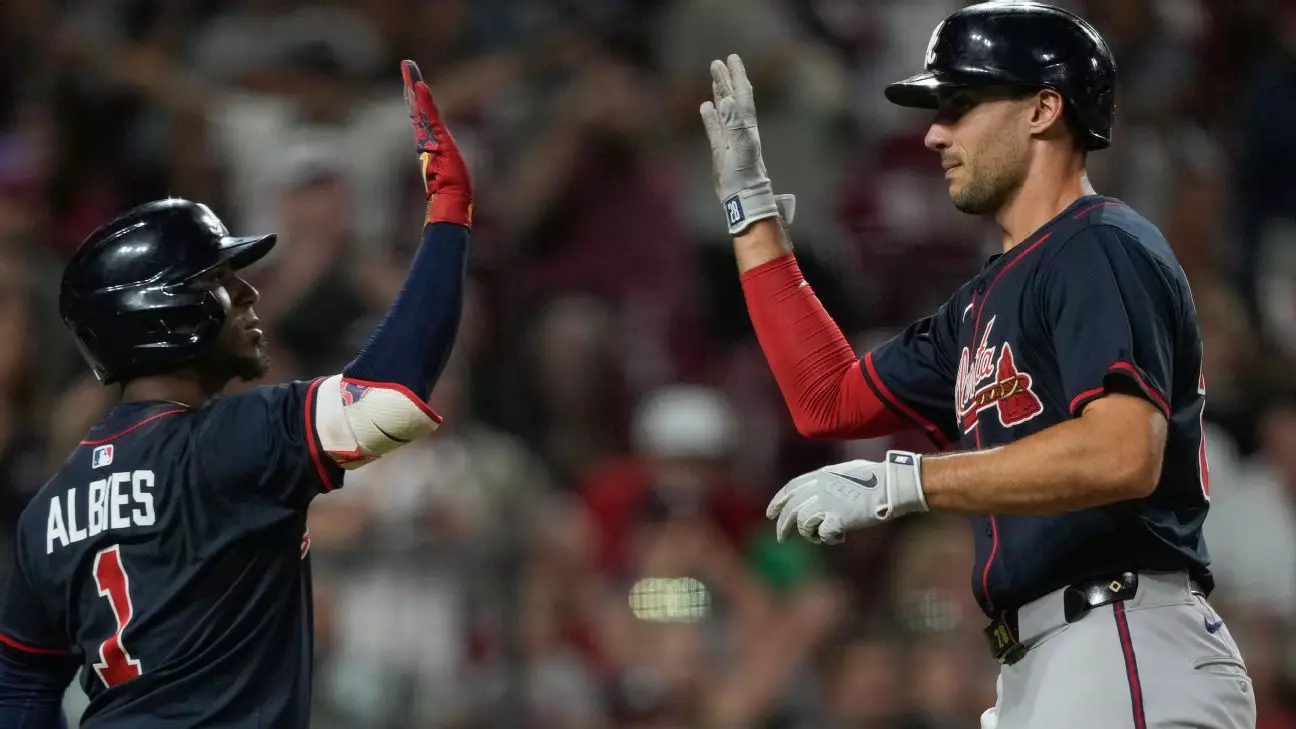Baseball is often heralded as America’s pastime, yet rarely does a regular season game deliver the level of drama experienced during that one extraordinary Thursday night in Cincinnati. When the Atlanta Braves and Cincinnati Reds took the field, few anticipated being witness to an event that would carve itself into the annals of Major League Baseball history. This game was not just about winning; it was a testament to the unpredictable, electrifying nature of the sport that keeps fans gripping their seats. The adrenaline-pumping eighth inning epitomized baseball’s ability to surprise, challenge, and thrill, forging an identity that can only be described as legendary.
Innings That Defy Logic
The eighth inning became a rollercoaster of emotions and statistical anomalies, forcing fans and analysts alike to reevaluate what is possible on the diamond. The Braves exploded for eight runs, a surge sparked by relentless hitting and aggressive baserunning, turning what seemed like a secure lead into a sudden crisis. Facing this barrage, the Reds refused to surrender quietly. Instead, they retaliated with equal ferocity, rallying for their own eight runs that flipped the scoreboard in an instant. This back-and-forth is a stark reminder that baseball’s rhythm is unpredictable; momentum can shift in a heartbeat, and no lead is ever truly safe.
The magnitude of this inning is highlighted by its rarity: it was only the third time in major league history that both teams scored at least eight runs in a single inning. Furthermore, the combined 16 hits in that frame, spread equally between the two clubs, illustrate just how ferocious and sustained that battle was. Such extraordinary offensive fireworks showcase the game’s capacity for spectacle, yet also expose the underlying vulnerabilities of pitching defenses everywhere.
The High-Stakes Drama and mental resilience
What does this innings reveal about teams and players in modern baseball? There’s a tangible testament to resilience—the Reds bouncing back from a devastating rally, then nearly winning the game with an emphatic home run from Ozzie Albies and clutch hits from multiple players. The game’s outcome hinged not merely on skill but on mental toughness, strategic adjustments, and a touch of luck.
Marcell Ozuna’s words—”I’ve never seen anything like that”—capture the collective astonishment. It was more than just a game; it was a spectacle that challenged expectations of baseball’s limits. The multiple pitching changes, the high number of hitters involved, and the tumultuous lead changes serve as an illustration of how crucial mental resilience is in baseball’s chaos. It tests players’ ability to stay focused amid chaos, to keep composure and adapt when circumstances threaten to overwhelm.
This game also underscores the importance of depth and versatility in pitching staffs. With 12 pitchers used during the game, it’s evident that teams pivot and strategize, fighting to contain the chaos of such innings. While the Reds’ Emilio Pagán endangered himself in defeat, the Reds’ bullpen management and offensive persistence kept the game alive and enthralling until the very last pitch.
Final Reflection: More Than Just a Fluke
In the end, this game exemplifies the essence of baseball’s unpredictability. It is a sport where heroic moments, historic errors, and fleeting fortunes collide, creating stories that fans will talk about for generations. While the Braves emerged victorious, the true winner was the game itself—daring, chaotic, and endlessly fascinating. It challenges us to see baseball not just as a sport, but as an evolving story of resilience, strategy, and unrelenting passion. For fans and players alike, this night was a vivid reminder: in baseball, anything is possible.


Leave a Reply